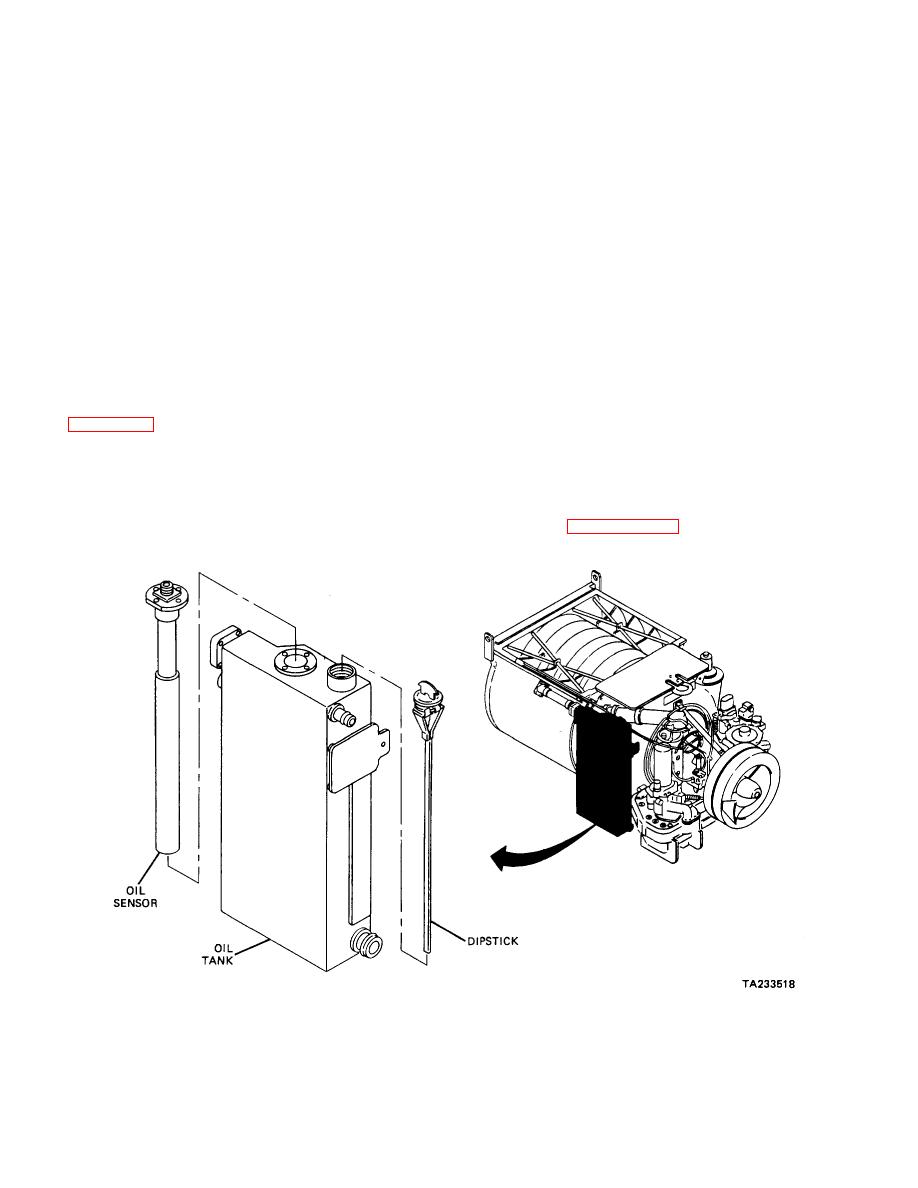
| Tweet |

Custom Search
|
|

|
||
 TM 9-8000
temperatures and break down under adverse conditions.
the lubrication system. Both types are discussed in
paragraphs 20-4 and 20-5.
b. Synthetic Oils. Synthetic oils are commonly used
c. Scavenger Pumps. These pumps are used to
as the lubrication medium. They are treated with the
collect oil that has passed through the components to be
proper compounds to allow them to withstand extreme
lubricated. The pumps then pressurize the oil to force it
operating conditions. More information on synthetic oils
to the next stage in the lubrication system. Both gear
can be found in chapter 8.
and rotor pumps generally are used for scavenging
operations.
10-19.
Lubrication System Components.
The
construction and operation of components common to
d. Filters. Oil filters are used to help remove
most gas turbine engines is discussed below.
impurities from the oil. They are serviced at regular
intervals. Three basic types of oil filters are used in
a. Oil Tanks. Oil tanks are used for onboard
turbine engines: screen, screen disk, and cartridge. The
storage of oil for the lubrication system. They usually are
screen and screen-disk type filters are cleaned and
made of welded sheet aluminum or steel. Cooling fins
reused while the cartridge type is removed and replaced
sometimes are used to provide additional heat transfer
by a new one.
through the sides of the tank. Oil tanks sometimes are
pressurized to ensure a constant supply of oil to the
e. Oil Coolers. Oil coolers are designed to transfer
pressure pump. A typical oil tank with dipstick is shown
unwanted heat from lubricating oil to another medium,
usually fuel or a passing air stream. The fuel-oil cooler
uses a high volume of fuel with respect to oil passing
b. Pressure Pumps. Both gear-and rotor-type
through the cooler to transfer unwanted heat from the oil
pumps are used to generate fluid pressure for
to fuel. A typical fuel-oil cooler is illustrated in figure 10-
21. The air-oil cooler is the same type as the one
discussed in paragraph 8-14.
Figure 10-20. Typical Oil Storage Tank
10-17
|
||
 |
||